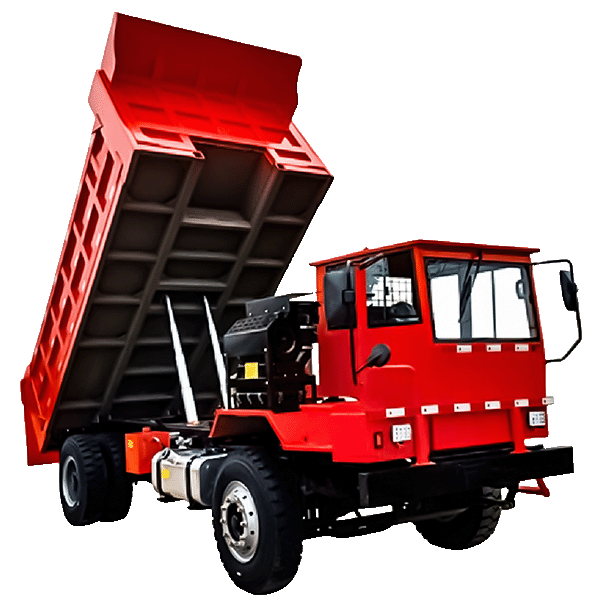
When it comes to mining, construction, and large-scale earthmoving projects, one machine consistently stands out for its utility and strength: the dump truck. Known for its ability to carry and unload vast amounts of material quickly, the dump truck has become a backbone of industries that depend on efficiency and reliability. Whether transporting ore from mines, shifting gravel for road building, or clearing debris from a construction site, this powerful vehicle plays an indispensable role in heavy-duty operations.
What Is a Dump Truck?
A dump truck is a heavy vehicle designed to transport loose materials such as sand, dirt, gravel, ore, or demolition waste. Its defining feature is the hydraulic lift system that raises the truck bed, allowing material to be dumped at the desired location. This functionality significantly reduces the need for manual labor, speeds up workflows, and ensures projects stay on schedule. Dump trucks vary widely in size and capacity, from small models suited for urban construction sites to enormous vehicles designed for open-pit mining.
Types of Dump Trucks and Their Applications
Not all dump trucks are created equal, and different types serve specific purposes:
- Standard Dump Trucks
These trucks feature a mounted bed with a hydraulic lift and are ideal for short-distance hauls. They are common in construction and road maintenance projects. - Articulated Dump Trucks (ADTs)
Equipped with a pivot joint between the cab and the bed, ADTs excel in rough and uneven terrains, making them a popular choice in mining and quarrying. - Off-Highway Mining Dump Trucks
Among the largest vehicles in the world, these trucks can carry hundreds of tons in a single load. They are specifically engineered for mining operations, transporting ore and overburden with efficiency. - Side Dump Trucks
Instead of tilting backward, these trucks discharge material from the side, offering added safety and stability on unstable ground.
The choice of dump truck depends on the project’s terrain, load requirements, and budget. Each design is tailored to maximize productivity under specific working conditions.
The Dump Truck in Mining Operations
Mining operations rely heavily on dump trucks to move raw material from extraction sites to processing facilities. These trucks are designed to handle extreme loads while navigating rugged landscapes. Large-capacity mining dump trucks can carry up to 400 tons of material in one trip, making them crucial for the profitability of mining projects.
The efficiency of these vehicles reduces fuel consumption per ton of material moved and lowers overall operational costs. Furthermore, advancements in automation are paving the way for autonomous dump trucks, which enhance safety and allow 24/7 operation with minimal downtime.
Advantages of Using Dump Trucks
The dump truck offers numerous benefits across industries:
- Efficiency and Speed: With hydraulic systems that unload materials in seconds, dump trucks drastically reduce cycle times.
- Versatility: They can transport a wide range of materials, from fine sand to massive boulders.
- Durability: Designed to withstand harsh working conditions, modern dump trucks are built from high-strength steel and feature advanced suspension systems.
- Scalability: Options range from compact trucks for city use to giant haulers for mega-mining projects.
These advantages explain why dump trucks remain one of the most common and vital machines in construction and mining sites worldwide.
Key Factors to Consider When Choosing a Dump Truck
Selecting the right dump truck can make a significant difference in project performance. Here are some critical factors to evaluate:
- Capacity Needs: Determine the load size your operation requires per trip.
- Terrain Type: Articulated dump trucks are better for off-road conditions, while standard trucks suit paved routes.
- Fuel Efficiency: Fuel is a major cost factor, so choosing a truck with efficient engines can reduce expenses.
- Maintenance and Durability: Look for trucks that are easy to service and known for long lifespans.
- Safety Features: Advanced braking systems, rollover protection, and visibility enhancements are vital in high-risk environments.
By carefully evaluating these factors, companies can ensure they invest in a dump truck that aligns with their operational goals.
Future Trends in Dump Truck Technology
The future of dump trucks is exciting, with new technologies reshaping the industry:
- Automation and Self-Driving Trucks: Autonomous dump trucks are already being tested in large mines, offering higher efficiency and improved worker safety.
- Electric and Hybrid Models: As sustainability becomes a priority, electric dump trucks are entering the market to reduce emissions and fuel costs.
- Smart Systems and Telematics: Integrated monitoring tools provide real-time data on load weight, fuel use, and truck health, allowing companies to optimize fleet management.
These innovations not only improve productivity but also contribute to greener and safer work environments.
Conclusion
The dump truck is far more than just a means of transporting material. It represents the intersection of strength, efficiency, and adaptability in industries where productivity and reliability are non-negotiable. From massive mining haul trucks carrying hundreds of tons to smaller models navigating city construction sites, dump trucks remain indispensable in shaping infrastructure and fueling progress.
As technology evolves, these machines will only become more efficient, sustainable, and intelligent, continuing their legacy as the backbone of mining and construction projects worldwide.
